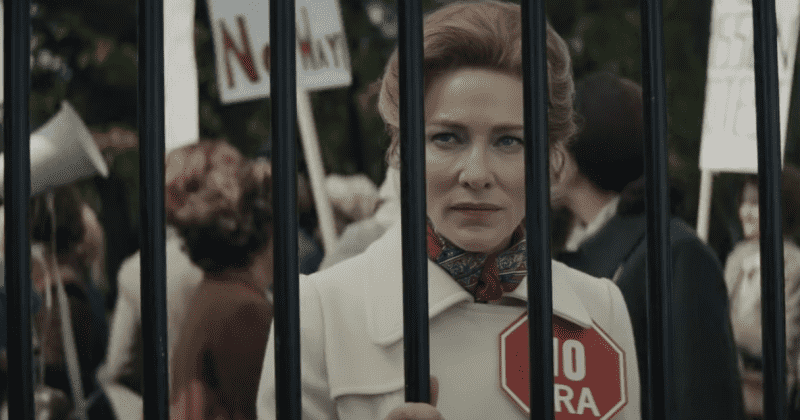Mrs America's final scene reinforces criticism about FX show making us sympathetic to Phyllis Schlafly

Spoilers for ‘Mrs. America’ Episode 9, ‘Reagan’
The finale of the FX limited series ‘Mrs. America’ ended on a despairing note. Not only did the end usher in the Ronald Reagan administration -- a regime of social and economic conservatism and that marked the downfall of civil liberty movements -- it also made clear that the second-wave feminists would again never wield the kind of power they did in the ‘70s.
But what was a true moment of low in the episode’s end, was centred around Phyllis Schlafly. Played by Cate Blanchett, the conservative lobbyist receives a phone call from Reagan himself, thanking her for her support. But what began on a positive note soon turned negative, as Reagan tells her that despite her invaluable help, he would not be able to offer her a position in his cabinet. His reasons were that because of Schlafly, he lost women voters and his continued official association would only hurt his public perception.
A crestfallen Schlafly then sits in her kitchen, peeling apples, preparing dinner. That’s the final scene of the series, before it moves to a montage of actual footage of Schlafly, Gloria Steinem, Bella Abzug, Shirley Chisholm and others.
It was that one scene that locked the belief held by many critics of the show that Dahvi Waller, the show’s creator, aimed at painting the conservative firebrand speaker in a sympathetic light. The argument that Schlafly, a woman largely responsible for the Equal Rights Amendment not getting ratified, was being portrayed not just kindly, but also in a manner so as to evoke sympathy, was largely debatable up until the final episode’s final scene.
A counter argument could be made that the show portrayed her more as pitiful than worthy of sympathies. It also made her look, on several occasions, like a hypocrite who reaped the rewards of her own paleo-conservative values. But the final scene sealed the deal on that matter.
The scene made Schlafly look like a heroic figure who was let down by more cunning allies. It made her efforts look Sisyphean. It made her disappointment and sadness very easy to believe. In fact, it made her look wronged in that one moment. She may have been wronged by Reagan. But she was and is definitely unworthy of anyone’s sympathies.
That she was destined to remain stuck to household duties does not make her a valiant soldier who was struck by an arrow before the moment of victory. It was her destiny because she advocated for it.
Of course, it is a subjective matter and many can and will disagree with the showrunner’s intentions with the final scene. But it’s difficult to not feel the heartbreak it evokes, while Molly Drake’s melancholic ‘Little Weaver Bird’ plays in the background. And in light of the kind of things that Schlafly did in the ‘70s and even afterwards, this scene feels almost manipulative.
It’s the mark of a good storyteller if they manage to make the audience experience a disconcerting and conflicting range of emotions. But that doesn’t change the fact that we are made to feel the pain of Phyllis Schlafly. When we don’t want to.